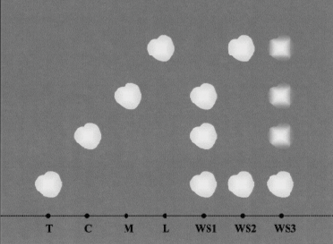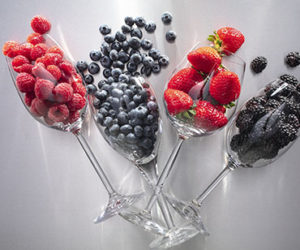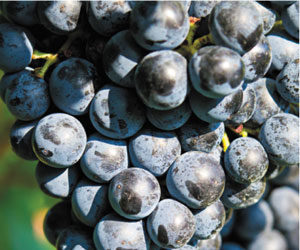Malolactic fermentation (MLF) is a secondary fermentation occurring when malolactic (ML) bacteria become active in the presence of malic acid. Bacteria may be present naturally in fresh grape juice or wines. It could also be acquired from oak barrels previously used for MLF or a winemaker can add them from a commercial culture. MLF cannot occur in concentrates and sterilized juices because the bacteria have been eradicated during the concentration or sterilization procedures. It is also not recommended in concentrates because most are tartrate-stabilized during production and therefore contain a high proportion of malic acid. MLF would convert the malic into lactic acid, leaving the wine with little acidity, and a pH above 3.8, resulting in a flabby wine that is susceptible to bacterial infections. Indigenous bacteria will provoke MLF naturally, but results are unpredictable because the type of bacteria cannot be ascertained. Some wild ML strains may impart off-flavors and may cause spoilage at low free sulfur dioxide (SO2) levels.
Relying on bacteria from a previous MLF in oak barrels or adding a selected culture will yield reliable and predictable results. These methods give winemakers more control and therefore reduce the risks of unsuccessful MLF or microbial infection. Although carrying out MLF is not difficult, the wine must provide a suitable environment for the bacteria to have its effect, and you need to closely monitor the progress.

Selecting an ML Culture
Oenococcus oeni species are the most common ML cultures used in home winemaking and are available in either liquid or freeze-dried format. Liquid cultures are normally added directly to wine, while freeze-dried cultures first need to be rehydrated in distilled water.
Liquid cultures are less stable and therefore have a shorter shelf life. Freeze-dried cultures can be stored up to one year in a refrigerator or 18 months in a deep freezer.
Preparing for MLF
An important consideration before doing a MLF is that this fermentation will cause a reduction in total acidity in wine. Therefore, if you do not want to reduce acidity in a low-acid wine (below 6.0 grams per liter), you should forego MLF. A wine with very low acidity will become flabby and unbalanced.
If you need to increase the acidity of a batch in anticipation of conducting MLF, do so before the start of alcoholic fermentation by using tartaric acid.
For the alcoholic fermentation, select a S. cerevisiae yeast strain that is compatible with MLF, such as Lalvin’s ICV/D-47, for a higher probability of a successful MLF. Inoculate the juice with yeast and conduct the alcoholic fermentation as usual, until the specific gravity drops to 1.000 or lower, prior to starting the MLF.
MLF is usually carried out immediately following the alcoholic fermentation so that they do not interfere with each other, although some ML cultures allow both fermentations to occur simultaneously. What is most important is that you observe the culture’s environmental conditions — conditions that would otherwise inhibit ML bacteria. Let’s examine these conditions.
First: The wine’s free SO2 content should be less than the maximum (typically between 5 and 15 mg/L) prescribed by the ML culture manufacturer because ML bacteria are very sensitive to free SO2. Be sure to only sulfite the wine lightly for any batch that you plan to take through MLF.
Second: The pH should be higher than the prescribed minimum (typically 3.2) because ML bacteria are also sensitive to low pH.
Third: The wine should be above 64° F (18° C) throughout MLF for the bacteria to become active. Either warm up a cool cellar, or move the wine to a warmer room without exceeding 77° F (25° C).
Fourth: ML bacteria need to feed on nutrients, which can be found in the lees — the deposits formed during alcoholic fermentation. Therefore, do not rack your wine before initiating MLF. And make sure you observe oxygenic requirements of the selected culture. Most ML bacteria used in home winemaking are sensitive to air, and can become easily inhibited if exposed. Try to avoid operations such as racking and vigorous stirrings during MLF.
A word of caution! Many of the above conditions favor growth of spoilage organisms. Use extra sanitary precautions to avoid potential problems. Ask your supplier for the full set of manufacturer’s instructions when buying ML culture, and strictly follow these instructions.
Conducting the MLF
When ready to start the MLF, inoculate the wine with an ML culture, making sure all environmental conditions are maintained favorably throughout this phase. If you expect to conduct the MLF under a more difficult environment, first condition the hydrated culture by adding it to an equivalent volume of commercial apple juice, containing no preservatives. Apple juice has a high malic acid concentration, which will “jump-start” the bacteria. Loosely cover the container, making sure there is little air space between the culture and the cover. Keep the culture at room temperature for two to four days and then add it to the wine. Be sure to stir very gently.
To inoculate several batches, withdraw a 5 percent volume of wine actively undergoing MLF and inoculate another batch with this sample. For example, withdraw approximately 1⁄4 gallon (1 L) to inoculate a 6-gallon (23-L) batch. Be sure to minimize the culture’s exposure to air.
Oak barrels used for MLF will become heavily populated with ML bacteria. Successive vintages can be ML-fermented in the same barrels without adding any bacteria. Simply transfer the wine to barrels and MLF will start on its own. When MLF has completed, sulfite the wine to 35–50 mg/L, top up containers and return the wine to the cellar for aging at a cooler temperature.
Measuring MLF Progress
MLF can take up to to three months to complete — the point when malic acid is totally converted into lactic acid — if the wine is held above 64 °F (18 °C). Always closely monitor and control MLF. Paper chromatography, an analytical procedure used to detect the presence of malic and lactic acids in wines, is a reliable method to monitor progress.
Be sure to always monitor the pH as well to avoid potential spoilage problems. MLF causes the pH to increase. If it is allowed to progresses to an unusually high level, the wine will oxidize prematurely and become more prone to bacterial infections and spoilage.
Paper Chromatography
Paper chromatography uses a special cellulose paper immersed in a solvent containing a color indicator. Kits costing approximately $45 U.S. are conveniently packaged and sold with all the necessary equipment and chemicals and include: 30 sheets of chromatography paper, large jar with a wide opening and lid, disposable micropipets, chromatography solvent (bright orange color) and 0.3 percent reference solutions of each of
malic, lactic, tartaric and citric acid. Use the solvent in a well-ventilated area because it has a very strong and irritating smell.
Using a lead pencil (ink will run when absorbed by the solvent), trace a horizontal line 11⁄4 inches (3 cm) from the bottom of the paper, across the long side. On the line, mark and label a reference dot for each reference solution and sample to be tested as T, C, M, and L for tartaric acid, citric acid, malic acid and lactic acid, and WS for each wine sample. The dots should be spaced at least 1 inch (2.5 cm) apart and from either edge of the paper.
Using different micropipets, “spot” each dot with a single drop of the corresponding reference acid solution or wine sample to be analyzed. Spot each dot three or four times, making sure to let each spot dry for approximately 15 minutes before re-applying (use a hair dryer to accelerate this process).
Curl the paper into a cylindrical shape around the vertical (short) axis without overlapping the edges, and staple the two ends at the top, middle and bottom. Pour enough solvent in the jar so that it is about 1 inch deep. Insert the paper in the jar and immerse it in the solvent, making sure that it stands upright, and then close the jar with the lid.
The solvent will start traveling up the chromatography paper and will cause acid components to “separate.” Allow the solvent to reach the top of the paper, which can take up to six hours. When completed, take the paper out of the jar, remove the staples from the paper and uncurl it. Hang it to dry in a warm, well-ventilated area to volatilize the solvent. Pour the leftover solvent back in its original container for other chromatography tests. After approximately three hours, yellowish spots will start appearing on the paper.
Interpreting Results
The spotted chromatography paper is referred to as a chromatogram. The figure below illustrates a typical chromatogram showing how spots have traveled and formed. For each sample, moving from the bottom edge of the paper towards the upper edge, the tartaric acid spot will have traveled the shortest distance, followed by citric, malic and lactic spots. Use the reference solution spots to help you locate horizontally the corresponding acid components of the wine samples.
When MLF has completed, you will see a clear lactic spot for the wine sample, and a very faint malic spot (a small trace always remains), as well as a tartaric spot. If any citric acid is present, a corresponding spot may be visible depending on the acid concentration.








